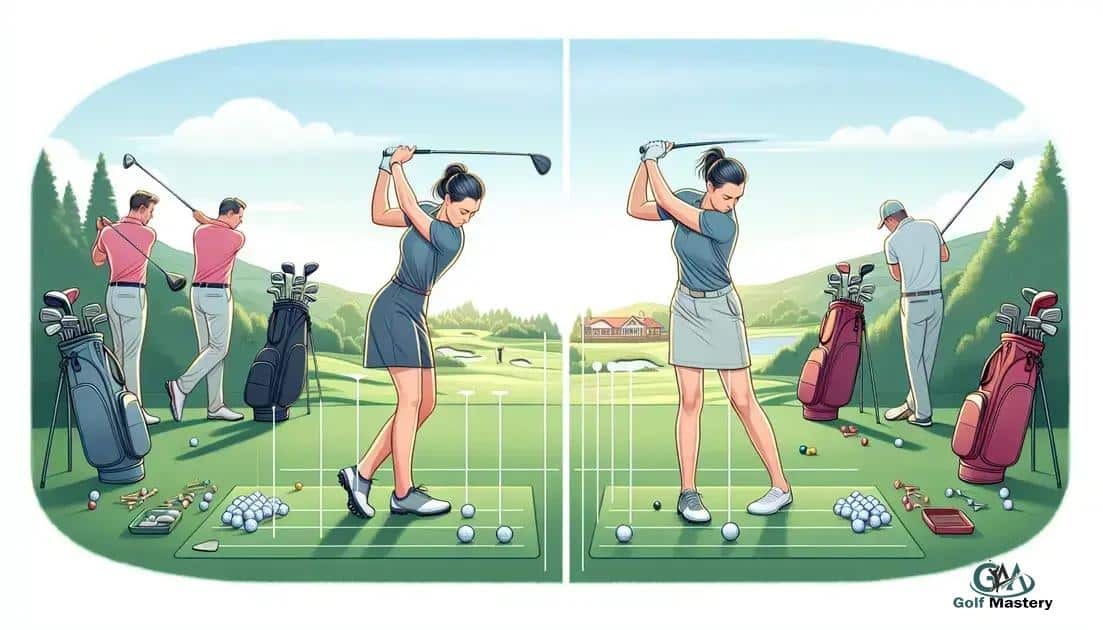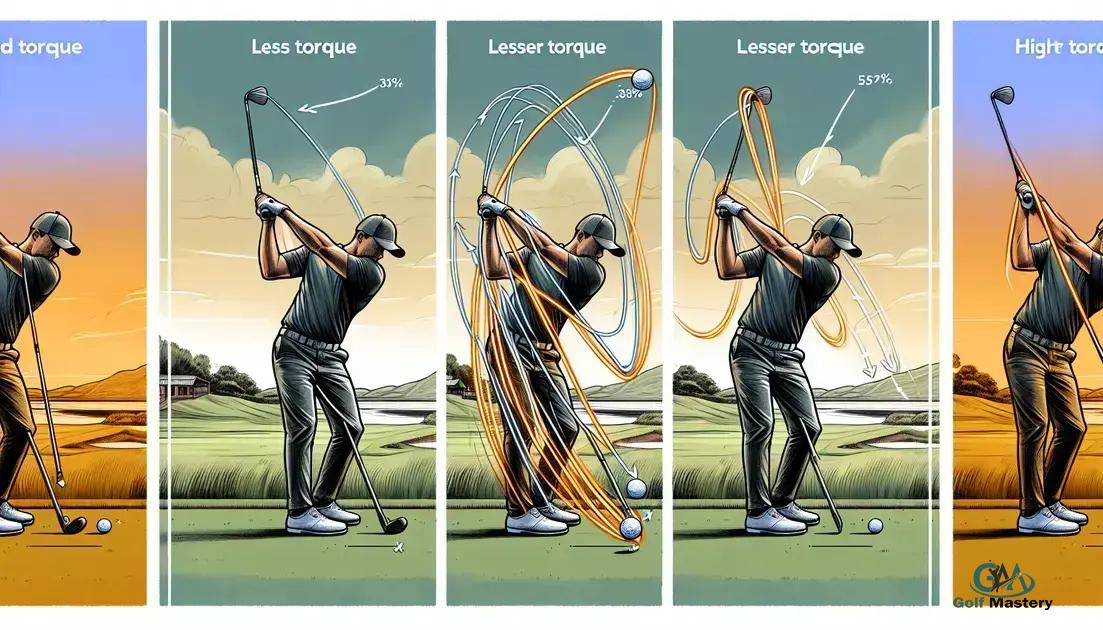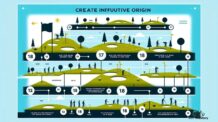Will less torque mean less hooks in golf swing? Uncover the surprising facts about torque in your golf technique now!
Less torque in your golf swing can significantly reduce hooks, enhancing your accuracy. By focusing on body mechanics, practicing key techniques, and being mindful of signs of excessive torque, golfers can achieve a more controlled and consistent performance on the course.
Have you ever wondered would less torque mean less hooks in golf swing? This question weighs heavy on the minds of many golfers aiming for improved accuracy and control. Torque, the twisting force applied during your swing, plays a significant role in how your ball travels. By examining the relationship between torque and the tendency to hook, we’ll uncover essential techniques that can lead to enhanced performance on the course.
Understanding Torque in Golf Swings
Understanding torque in golf swings is critical for enhancing performance and lowering your scores. Torque refers to the rotational force created during your swing. This force can significantly impact how the club head delivers the ball, affecting both distance and accuracy.
What is Torque in Golf?
In simple terms, torque occurs when a force is applied to a pivot. In golf, your body acts as the pivot point, while the club and your swinging motion create the torque. This is often a result of the rotation of your hips and shoulders during the swing.
The Role of Torque in Your Swing
During the backswing, your body stores potential energy as it rotates. This buildup of energy, or torque, is released during the downswing. A well-timed release of this stored energy maximizes club speed, which can improve distance. Importantly, too much torque can lead to inconsistent swings and unwanted hooks.
Understanding the Balance of Torque
Finding the right balance of torque is essential. If you create too much torque, it can disrupt your swing plane and lead to hooks. Alternatively, insufficient torque may result in weak shots lacking distance. Golfers should aim for an optimal torque level that aligns with their unique swing style and physical capabilities.
Monitoring Your Torque
Keep an eye on your swing mechanics through video analysis and feedback from coaches. Look for any excessive twisting or misalignment that might contribute to unwanted torque. By understanding how torque plays a role in your swing, you can make adjustments to enhance your overall game.
Ultimately, understanding torque in golf swings will lead to improved control and consistency. As you adjust your technique, remember the balance between creating power while maintaining accuracy, contributing to a more successful golfing experience.
How Torque Affects Hooking the Ball
How torque affects hooking the ball is crucial for every golfer looking to improve their accuracy. When the torque in your swing is too high, it can lead to a significant hook. A hook is when the ball curves sharply to the left for right-handed players or to the right for left-handed players, often resulting from an improper swing path or an incorrect clubface angle at impact.
The Impact of Excessive Torque
Excessive torque during the swing can create a force that pulls the clubhead down and across the ball. This movement can close the clubface too early, causing it to impart a leftward spin on the ball. The more torque generated, particularly through your arms and wrists, the more likely you are to encounter this problem.
Role of Body Movement
Your body mechanics play a significant role in how torque manifests in your swing. If your hips and shoulders rotate too quickly, they can create a chain reaction that leads to excessive torque. This might cause your arms to pull across your body, resulting in a hook. Proper timing and synchronization between your body movements and the club’s motion are essential in mitigating this risk.
Adjusting Your Grip and Stance
How you grip the club and position your body can also influence the amount of torque in your swing. A weaker grip, where your hands are rotated more toward the target, can help open the clubface at impact, reducing the likelihood of a hook. Similarly, maintaining a balanced and stable stance can also help you control torque and prevent mishits.
Practicing Torque Control
To practice controlling torque effectively, focus on maintaining a steady tempo during your swings. You can incorporate drills that emphasize a smooth transition from the backswing to the downswing without excessive force. Using training aids like impact bags or alignment sticks can provide valuable feedback and help you develop a more controlled swing.
By understanding how torque affects hooking the ball, golfers can take necessary steps to minimize this issue, leading to straighter shots and lower scores.
Signs of Excessive Torque in Your Swing
Signs of excessive torque in your swing can severely impact your golf game. Recognizing these signs can help you adjust your technique early. Here are some common indicators of excessive torque:
1. Poor Ball Trajectory
If you notice that your shots consistently curve to the left (for right-handed golfers) or right (for left-handed golfers), or have unpredictable flight paths, this may result from excessive torque during your swing. Such inconsistencies often indicate that the clubface is closing too quickly at impact.
2. Loss of Distance
While many golfers want more distance, excessive torque usually leads to a loss of power. When your swing’s torque is out of control, you may feel like you’re hitting the ball well but not achieving the desired distance. This can stem from losing energy through misalignment and poor mechanics rather than maximizing the clubhead speed.
3. Swing Path Issues
Excessive torque can lead to a swing path that is too steep or too flat. If you find yourself frequently hitting fat or thin shots, this inconsistency may be a sign of too much torque affecting your angle of attack with the club.
4. Muscle Tension
Feeling tightness or tension in your arms, shoulders, or back after swinging is another sign of excessive torque. When your body is trying to compensate for out-of-control movements, it can lead to strain and discomfort, hindering your overall swing performance.
5. Unstable Follow-Through
An unstable or awkward follow-through is often a sign that excessive torque disrupted your swing. If you are not finishing your swing in balance or your ending position feels forced, this suggests issues with the torque generated during your swing.
Being aware of these signs can help you make the necessary adjustments to enhance your technique and performance on the course. By recognizing how to identify excessive torque, you can work towards a more efficient and effective golf swing.
Techniques to Reduce Torque for Better Control
Techniques to reduce torque for better control can significantly improve your golf performance. By focusing on a few key areas, golfers can enhance their swings and minimize unwanted hooks. Here are some effective techniques:
1. Strengthen Core Muscles
Strengthening your core is essential for better control during your swing. A strong core stabilizes your body and allows for smoother transitions. Incorporate exercises like planks, Russian twists, and medicine ball rotations into your training routine to build core strength.
2. Focus on Your Grip
Your grip directly influences the amount of torque you generate. A grip that’s too strong can cause excessive torque. To prevent this, try using a more neutral grip, where your palms face each other. This adjustment can help you maintain better control throughout your swing.
3. Improve Swing Mechanics
Work on your swing mechanics to create a more efficient motion. Focus on a smooth takeaway and a controlled backswing. Keep your arms and body synchronized to minimize the unnecessary twisting that leads to excessive torque.
4. Use Proper Foot Placement
Your feet play a crucial role in stabilizing your body. Ensure your feet are shoulder-width apart and flat on the ground during your swing. Maintaining good balance through proper foot placement can help reduce unnecessary torque and improve control.
5. Visualization Techniques
Visualizing a smooth swing can also help in reducing torque. Before you take your shot, picture your swing in your mind. This mental rehearsal can enhance your muscle control and reinforce the proper mechanics needed for a more controlled shot.
6. Practice with Limited Torque
During practice sessions, focus on making swings with limited torque. Use training aids or alignment sticks to encourage proper swing path and mechanics. Gradually increase your power as you become more comfortable with maintaining control.
By implementing these techniques, golfers can work towards reducing torque for better control, ultimately leading to more accurate shots and improved performance on the course.
The Impact of Body Mechanics on Torque
The impact of body mechanics on torque is a vital aspect of a golfer’s performance. Proper body mechanics can help manage torque effectively, leading to a more controlled and accurate swing. Here’s how different elements of body mechanics influence torque:
1. Hip Rotation
Your hips play a crucial role in creating and managing torque during your swing. Proper hip rotation helps store energy in your backswing. The sequence of your hip movement is essential; if your hips move too quickly or too slowly, it can lead to excessive torque and unwanted shots.
2. Shoulder Alignment
Shoulder alignment impacts how torque is generated. Maintaining a proper shoulder turn can help you achieve a more consistent swing. If your shoulders are misaligned or over-rotated, it can negatively affect your swing path and increase torque, leading to hooks or slices.
3. Arm Position
The position and movement of your arms during the swing also contribute to torque. Keeping your arms relaxed and in sync with your body rotation can help reduce unnecessary torque. Overextending or raising your arms too high can create tension and lead to inconsistent shots.
4. Weight Distribution
How you distribute your weight during the swing is another factor that affects torque. You should maintain a balanced stance throughout the swing. Shifting weight too early or too late can generate excess torque, compromising your swing’s integrity and accuracy.
5. Follow-Through Motion
A smooth follow-through is critical for effective body mechanics. A controlled follow-through ensures that the torque built up during your swing is released evenly. If your follow-through is abrupt or unsteady, it may indicate that your body mechanics were off, contributing to excessive torque.
By understanding and improving your body mechanics, you can significantly control torque, leading to a more consistent golf game and fewer hooks on the course.
In Summary: Mastering Torque for Improved Golf Performance
Understanding torque and its effects on your golf swing is essential for any golfer aiming to improve their game. By recognizing how body mechanics, excessive torque, and control techniques play a role, you can make informed adjustments to your swing.
Implementing better body mechanics, monitoring signs of excessive torque, and practicing specific techniques can lead to more consistent swings and straighter shots. This not only helps in reducing the tendency to hook the ball but also enhances overall performance on the course.
By focusing on these aspects, golfers can develop more efficient swings, resulting in greater distance and accuracy. As you work on mastering these elements, remember that consistency is key to success in golf.
FAQ – Frequently Asked Questions About Reducing Torque in Golf Swing
What is torque in a golf swing?
Torque refers to the twisting force created during a golfer’s swing, which affects the club’s speed and direction.
How does excessive torque impact my golf shots?
Excessive torque can lead to inconsistent swings, resulting in hooks or slices and a loss of distance.
How can I recognize signs of excessive torque in my swing?
Signs include poor ball trajectory, loss of distance, swing path issues, muscle tension, and an unstable follow-through.
What techniques can help reduce torque in my swing?
Techniques include strengthening core muscles, focusing on grip, improving swing mechanics, and maintaining proper weight distribution.
How do body mechanics affect torque?
Proper body mechanics, including hip rotation, shoulder alignment, and arm position, help manage torque and improve swing control.
Can I improve my swing consistency by managing torque?
Yes, by reducing torque and focusing on your mechanics, you can achieve a more consistent and effective golf swing.






Leave a Reply